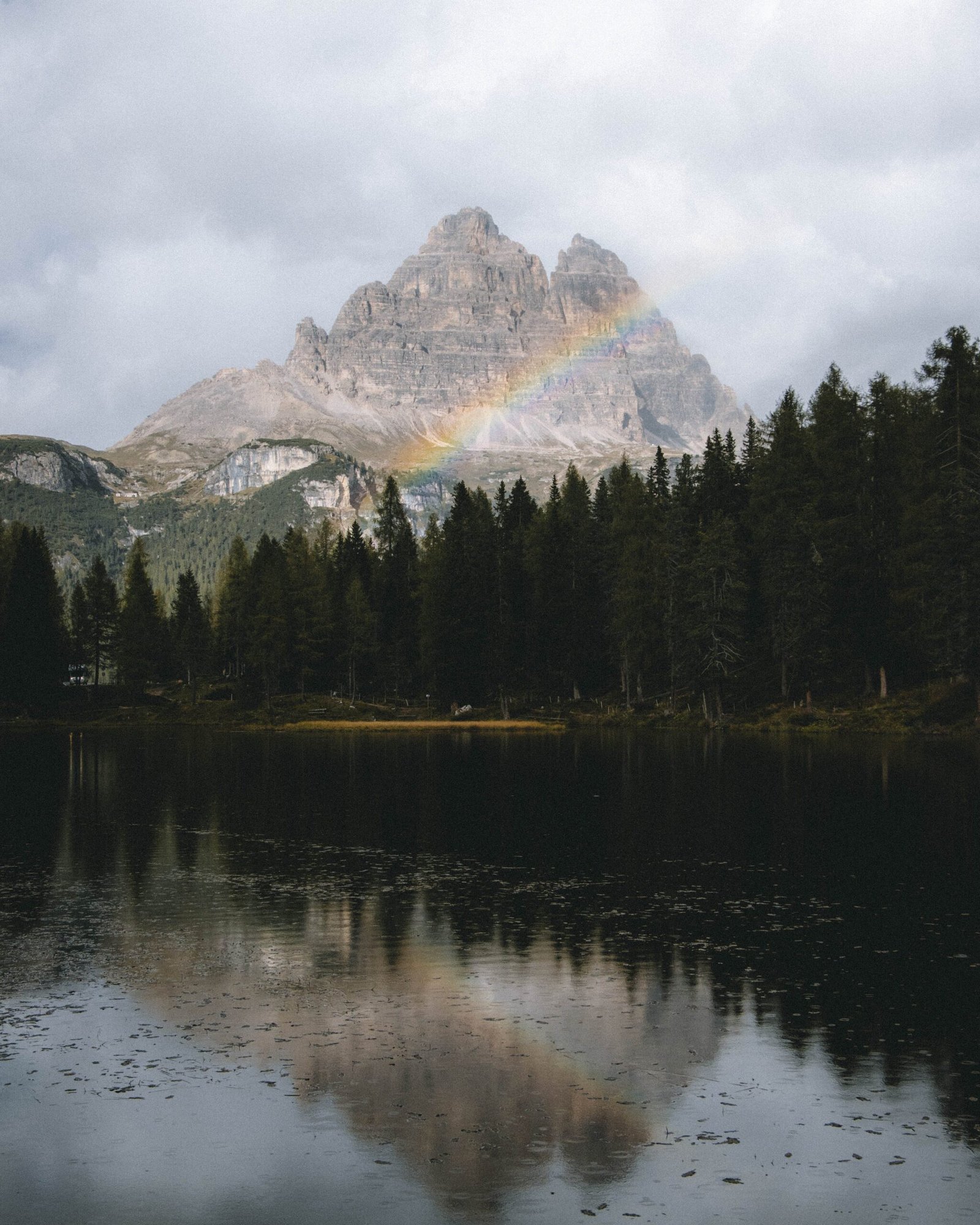
Imagine embarking on a journey to discover the charm, history, and breathtaking landscapes of Ireland, a destination that has captivated travelers from all around the world. In this comprehensive guide, we will take you on an unforgettable adventure across the Emerald Isle, specifically tailored for those traveling from the US. Prepare to be enchanted by the ancient castles, vibrant cities, and picturesque countryside as we unlock the secrets to making your Irish vacation an extraordinary experience. With insider tips, practical advice, and an abundance of friendly hospitality, get ready to fall in love with the best of Ireland.

Best Time to Visit Ireland
Climate and Weather
The climate in Ireland is known for being temperate and it experiences mild winters and cool summers. The weather can be quite changeable, so it’s always a good idea to pack layers and be prepared for rain. The months of May through September are generally considered the best time to visit Ireland, as the weather is relatively mild and the countryside is in full bloom. However, if you don’t mind cooler temperatures and fewer crowds, the shoulder seasons of April/May and September/October can also be a great time to visit.
Peak and Off-Peak Seasons
Ireland experiences its peak tourist season during the months of July and August, when schools are on summer break and the weather is at its warmest. During this time, popular tourist spots can be quite crowded, and accommodations may be more expensive. If you’re looking to avoid the crowds, consider visiting during the off-peak seasons of spring (April and May) or autumn (September and October). During these times, you’ll have a chance to enjoy Ireland’s natural beauty without the hustle and bustle of peak tourist numbers.
Events and Festivals
Ireland is well-known for its vibrant cultural events and festivals. From St. Patrick’s Day celebrations to music festivals and literary gatherings, there’s always something happening in Ireland. If you have a specific event or festival in mind that you’d like to experience, make sure to plan your trip around the dates. Some of the most popular festivals in Ireland include the Galway International Arts Festival, the Dublin Fringe Festival, and the Cork Jazz Festival. These events offer a unique opportunity to immerse yourself in Irish culture and make unforgettable memories.
Getting to Ireland
Flights from the US
If you’re traveling from the US, there are several airlines that offer direct flights to Ireland. The major international airports in Ireland are Dublin Airport and Shannon Airport, with Dublin being the busiest and most well-connected. Popular airlines that operate flights between the US and Ireland include Aer Lingus, Delta Air Lines, and American Airlines. It’s recommended to book your flights well in advance to secure the best deals and availability, especially during peak travel seasons.
Alternative Transport Options
If you’re looking for a more adventurous way to get to Ireland, you might consider alternative transport options such as taking a cruise or traveling by ferry. Some cruise lines offer itineraries that include stops in Ireland, allowing you to combine your cruise experience with a visit to the Emerald Isle. Additionally, several ferry companies operate routes between Ireland and the UK, providing a scenic and unique journey across the Irish Sea. This can be a great option if you prefer a slower pace of travel and want to bring your own vehicle.
Entry Requirements and Documentation
Passports and Visas
As a US citizen, you do not need a visa to travel to Ireland for short-term tourism or business purposes. However, you will need a valid passport that is still valid for at least six months beyond your intended departure date. It’s important to check the expiration date on your passport and renew it if necessary before your trip. Additionally, it’s a good idea to make a copy of your passport and keep it in a separate place from your original passport, in case of loss or theft.
Customs Regulations
When entering Ireland, there are certain customs regulations that you should be aware of. It is important to declare any items of value, such as expensive electronics or large sums of cash, upon arrival. Ireland has duty-free allowances for goods that you can bring into the country, and it’s always a good idea to familiarize yourself with these allowances before your trip. Additionally, Ireland has strict rules regarding the import and export of certain goods, so make sure to check the customs regulations to avoid any issues.
Currency and Exchange
Currency in Ireland
The official currency of Ireland is the euro (€). It’s recommended to have some cash on hand when traveling in Ireland, as not all establishments accept credit cards or foreign currency. You can obtain euros from currency exchange counters at airports, banks, or post offices. It’s a good idea to check the current exchange rate before exchanging your currency to ensure you’re getting a fair rate.
Exchanging Money
When exchanging money, be mindful of transaction fees and exchange rates. Some exchange bureaus may charge high fees or offer unfavorable exchange rates, so it’s worth shopping around for the best deal. Many banks in Ireland also offer currency exchange services, and their rates may be more favorable than those at exchange counters. Additionally, consider using ATMs to withdraw cash in local currency, as they often offer competitive exchange rates.
Using Credit Cards and ATMs
Credit cards are widely accepted in Ireland, especially in larger cities and tourist areas. Visa and Mastercard are the most commonly accepted cards, although American Express and Discover may have more limited acceptance. It’s always a good idea to inform your credit card company of your travel plans to ensure that your transactions are not flagged as suspicious activity. Additionally, ATMs are widely available throughout Ireland, allowing you to withdraw cash as needed. Just be aware that some ATMs may charge withdrawal fees, so check with your bank before using them.

Transportation in Ireland
Renting a Car
Renting a car can be a convenient way to explore Ireland, especially if you’re planning to travel outside of major cities and tourist areas. In Ireland, cars drive on the left-hand side of the road, so it’s important to feel comfortable with this before renting a car. You will need a valid driver’s license and be at least 21 years old to rent a car in Ireland. It’s recommended to book your car rental in advance, especially during peak travel seasons when availability may be limited.
Public Transportation
Ireland has a comprehensive public transportation system that includes buses and trains. Bus Eireann operates a network of buses that connect cities and towns throughout the country, making it a convenient and affordable way to get around. Irish Rail operates train services that connect major cities, and there are also regional train services available. Both buses and trains offer scenic views of the countryside and can be a great way to explore Ireland at a slower pace.
Driving in Ireland
If you choose to drive in Ireland, there are a few things to keep in mind. As mentioned earlier, cars drive on the left-hand side of the road in Ireland, so it’s important to pay attention to this and drive accordingly. Speed limits are in kilometers per hour (km/h) and vary depending on the type of road. It’s important to familiarize yourself with the road signs, as they may be different from what you’re used to. Additionally, be aware that some rural roads in Ireland can be narrow and winding, so exercise caution when driving.
Accommodation Options
Hotels
Hotels are a popular accommodation option in Ireland, offering a range of amenities and services. From luxury hotels to budget-friendly options, there’s something to suit every traveler’s needs and budget. Hotels often provide a high level of comfort and convenience, with features such as on-site restaurants, bars, and leisure facilities. It’s recommended to book your hotel in advance, especially if you’re traveling during peak tourism seasons, to ensure availability and secure the best rates.
Hostels
For budget-conscious travelers or those looking for a more social experience, hostels can be a great option. Hostels in Ireland offer shared dormitory-style accommodations, as well as private rooms in some cases. Many hostels have communal areas where travelers can socialize and meet fellow adventurers. Some hostels also offer amenities such as kitchen facilities, laundry services, and organized activities. Staying in a hostel can be a great way to save money and meet like-minded travelers.
Bed and Breakfasts
Bed and breakfasts (B&Bs) are a popular choice for those seeking a more personalized and cozy accommodation experience. B&Bs are typically family-run establishments and offer a warm and friendly atmosphere. Each morning, guests are treated to a home-cooked breakfast, often made with locally sourced ingredients. B&Bs can be found throughout Ireland, including in rural areas, and provide a unique opportunity to immerse yourself in the local culture and hospitality.
Cottage Rentals
If you’re looking for a self-catering option or a home away from home, consider renting a cottage in Ireland. Cottage rentals are available in various sizes and locations, from quaint countryside retreats to coastal hideaways. Renting a cottage allows you to have your own space and flexibility, and it’s a great option for families or groups of friends traveling together. Many cottage rentals come equipped with kitchens and other amenities, making it easy to prepare your own meals and truly experience the Irish way of life.

Exploring Dublin
Must-Visit Attractions
Dublin, the capital city of Ireland, is a vibrant and bustling destination with a rich history and plenty of attractions to explore. Some of the must-visit attractions in Dublin include the historic Trinity College, home to the Book of Kells, which is one of Ireland’s most treasured manuscripts. The Guinness Storehouse is another popular attraction, where you can learn about the brewing process and enjoy a pint of the famous Irish stout. Other must-visit spots include St. Patrick’s Cathedral, Dublin Castle, and the lively Temple Bar district.
Cultural and Historical Sites
Dublin is steeped in history and culture, and there are numerous sites that showcase the city’s rich heritage. The Dublinia museum offers a fascinating insight into Dublin’s Viking and medieval past, while the Kilmainham Gaol provides a somber reminder of Ireland’s struggle for independence. If you’re interested in literature, a visit to the Dublin Writers Museum or the James Joyce Centre is a must. Additionally, don’t miss the chance to explore the beautiful Phoenix Park, one of Europe’s largest urban parks, and stroll along the picturesque River Liffey.
Entertainment and Nightlife
Dublin is famous for its vibrant nightlife and entertainment scene. From traditional Irish music sessions in cozy pubs to live performances at popular venues, there’s something for everyone. Temple Bar, in particular, is a lively neighborhood known for its pubs, restaurants, and live music. Many pubs in Dublin offer traditional Irish music sessions, where you can listen to talented musicians playing fiddles, bodhráns, and tin whistles. If you’re interested in theater and the arts, Dublin is home to numerous theaters and galleries that showcase local and international talent.
Discovering the Irish Countryside
Popular Tourist Routes
Venturing beyond Dublin, the Irish countryside offers breathtaking landscapes and a chance to experience the charm of rural Ireland. The Ring of Kerry is one of the most popular tourist routes, taking you on a scenic drive along the coast of County Kerry. The Wild Atlantic Way is another stunning route, stretching over 1,600 miles along Ireland’s west coast and offering dramatic cliffs, picturesque villages, and pristine beaches. The Causeway Coastal Route in Northern Ireland is also worth exploring, with highlights including the Giant’s Causeway and the Carrick-a-Rede Rope Bridge.
National Parks and Nature Reserves
Ireland is home to several national parks and nature reserves, which showcase the country’s natural beauty. Killarney National Park in County Kerry is one of the most famous, known for its stunning lakes and mountains. The Burren National Park in County Clare is renowned for its unique limestone landscapes and diverse flora and fauna. Connemara National Park in County Galway offers breathtaking views of rugged mountains and picturesque lakes. These parks provide opportunities for hiking, wildlife spotting, and immersing yourself in Ireland’s stunning natural surroundings.
Traditional Irish Villages
One of the best ways to experience the authentic charm of Ireland is by visiting traditional Irish villages. These villages offer a glimpse into the country’s rural heritage and are known for their colorful houses, friendly locals, and traditional music sessions. Some of the most picturesque villages include Adare in County Limerick, Doolin in County Clare, and Cong in County Mayo. Exploring these villages allows you to slow down, soak in the laid-back atmosphere, and interact with the local community, providing a truly authentic Irish experience.
Sampling Irish Cuisine
Traditional Dishes
No trip to Ireland would be complete without sampling some traditional Irish dishes. From hearty stews to freshly caught seafood, the country’s cuisine is sure to delight your taste buds. Some must-try dishes include Irish stew, made with lamb or beef and hearty vegetables; boxty, a type of potato pancake; and colcannon, a dish made from mashed potatoes and cabbage or kale. Additionally, don’t forget to try soda bread, a traditional Irish bread made with baking soda, which is perfect for spreading with butter and enjoying with a cup of tea.
Pubs and Local Eateries
Pubs are an integral part of Irish culture, and they often serve as gathering places for locals and tourists alike. Many pubs in Ireland also offer delicious food, ranging from classic pub grub to gourmet cuisine. Fish and chips, burgers, and traditional Irish breakfasts are popular options in pubs. For a truly authentic experience, seek out local eateries that specialize in regional dishes, such as seafood chowder on the coast or black pudding in the countryside. Exploring the local food scene is a great way to immerse yourself in Irish culture and culinary traditions.
Food Festivals
Ireland is known for its vibrant food festivals, where you can sample local produce, artisanal products, and traditional dishes. The Galway International Oyster and Seafood Festival is one of the largest seafood festivals in the world, attracting food lovers from near and far. The Dingle Food Festival in County Kerry celebrates the best of local food and features cooking demonstrations, tasting events, and a food market. These festivals provide a unique opportunity to indulge in Irish cuisine, meet local producers, and experience the lively atmosphere of Ireland’s foodie scene.
Safety and Travel Tips
Emergency Numbers
Before traveling to Ireland, it’s important to familiarize yourself with the emergency numbers. In case of an emergency, the general emergency number in Ireland is 112 or 999. These numbers can be dialed from any phone, including mobile phones. It’s a good idea to save these numbers in your phone or keep them written down in case of any unforeseen situations.
Health and Safety Advice
Ireland is generally a safe destination for travelers, but it’s still important to take precautions and stay aware of your surroundings. It’s recommended to have travel insurance that covers medical expenses, as well as any potential trip interruptions or cancellations. Make sure to pack any necessary medications and have a basic first-aid kit with you. It’s also a good idea to follow basic safety practices, such as keeping your belongings secure, not walking alone at night in unfamiliar areas, and obeying any local laws or regulations.
Cultural Etiquette
When visiting another country, it’s always a good idea to familiarize yourself with the local customs and cultural etiquette. In Ireland, people are known for their friendliness and hospitality, so it’s important to reciprocate these qualities. Greet people with a friendly “hello” or “good morning” and use “please” and “thank you” when interacting with locals. Don’t be afraid to strike up a conversation with the friendly Irish people, as they are often open to chatting with visitors. Lastly, be respectful of any cultural or religious traditions, and always ask for permission before taking photographs of people or religious sites.
Ireland offers a wealth of experiences and attractions for every traveler, from its vibrant cities to its picturesque countryside. By planning your visit around the climate, considering entry requirements and documentation, and choosing the right accommodations and transportation options, you can make the most of your trip to the Emerald Isle. Don’t forget to sample the delicious Irish cuisine, immerse yourself in the rich culture, and embrace the warm hospitality of the Irish people. Whether you’re exploring Dublin’s historical gems, traversing scenic tourist routes, or simply enjoying the lively atmosphere in a traditional Irish pub, Ireland is sure to leave you with unforgettable memories.





